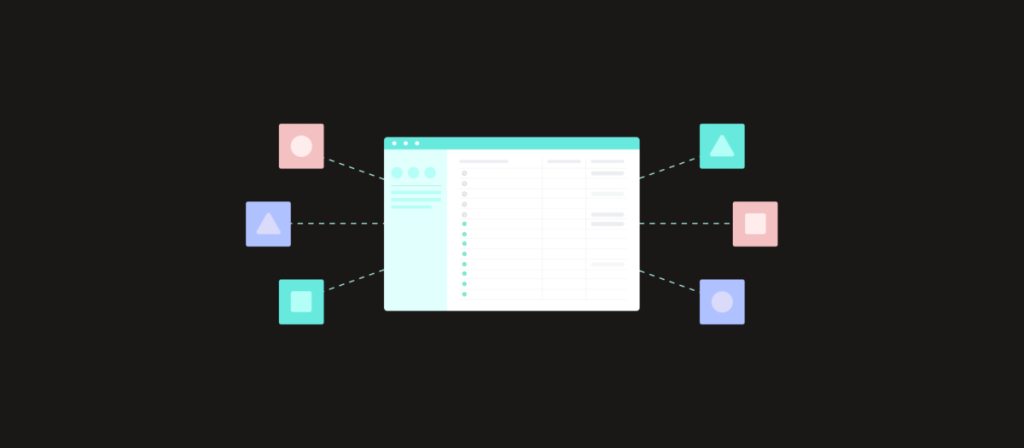In today’s enterprise landscape, data is no longer just an asset—it’s the fuel for transformation. From AI-driven decision-making to real-time personalization and digital operations, enterprises need platforms that don’t just move data, but unify, govern, and activate it at scale. Too often, organizations think of data integration as simply shuttling information from point A to point B. The real business value, however, comes from connecting data across silos, transforming it into usable form, ensuring trust, and orchestrating it into action.
Below, we’ll break down the critical capabilities that define a truly enterprise-ready data integration platform.
Core Capabilities: Beyond Point-to-Point
The foundation of any enterprise data integration platform is connectivity and transformation at scale.
- Universal Connectivity
Enterprises run on a complex stack—SaaS applications, on-prem databases, APIs, ERP and CRM systems, even legacy mainframes. A modern platform must connect seamlessly across all of these, whether data lives in Salesforce, SAP, Oracle, Snowflake, or a flat file sitting in cloud storage. True enterprise readiness means no data source is left out, and IT doesn’t need endless custom connectors to fill the gaps. - Batch, Streaming, and Real-Time
Business decisions don’t wait. Whether it’s nightly ETL jobs, near-real-time customer behavior streaming, or true event-driven triggers, the platform must support every mode of ingestion. This flexibility enables use cases ranging from monthly reporting to instant fraud detection. - ETL + ELT with Flexible Transformation
The old debate between ETL and ELT is over—enterprises need both. A robust platform lets teams choose whether to transform before or after loading, depending on the data volume, latency requirements, and the analytical system in play. Equally important, transformations should be language-agnostic: low-code for business users, SQL/Python/Scala for engineers. - Event-Driven Orchestration & Elastic Scalability
As workloads spike, the platform should scale elastically without manual intervention. Event-driven architecture ensures data pipelines respond to business activity, not arbitrary schedules. This is critical for AI applications, where the timeliness of data directly affects model accuracy. - Support for All Data Types
Data isn’t just rows and columns anymore. From structured financial records to semi-structured JSON logs to unstructured text, images, and IoT sensor feeds—the platform must be able to process them all. Enterprises can’t afford to leave unstructured data out of their analytics and AI pipelines.
Governance & Trust: Data That Can Be Relied On
No amount of connectivity matters if data can’t be trusted. Governance is the backbone of enterprise data integration.
- Data Quality Monitoring & Anomaly Detection
Garbage in, garbage out. A platform should continuously monitor data for errors, duplicates, and anomalies, providing alerts before bad data impacts analytics or customer experiences. Automated profiling ensures stakeholders know what shape their data is in—before it’s used. - Centralized Metadata & Lineage
Enterprises need visibility into where data came from, how it was transformed, and where it flows. Lineage is not just a compliance requirement—it’s a business enabler. With metadata management, teams can troubleshoot pipelines, improve performance, and ensure transparency. - Enterprise-Grade Security & Compliance
Today’s enterprises operate under stringent regulations (GDPR, HIPAA, CCPA). A modern integration platform must support role-based access control (RBAC), encryption in motion and at rest, masking of sensitive data, and compliance reporting. Security cannot be bolted on—it must be native.
Enterprise Readiness: Scaling Beyond Pilot Projects
What separates a hobby project from an enterprise-ready platform is the ability to scale across teams, regions, and business units.
- API Management & Reverse ETL
It’s not enough to integrate data into a warehouse—organizations need to push it back into operational systems where employees and applications can act on it. Reverse ETL ensures insights don’t get trapped in dashboards but power CRM updates, customer messaging, and product personalization. Meanwhile, API management makes it easy to expose and consume services securely. - Monitoring, Alerting & SLA Tracking
Enterprises need confidence in their data flows. Built-in observability ensures teams can track uptime, performance, and SLAs. This isn’t just IT hygiene—it directly impacts customer trust and regulatory compliance. - Collaboration & Extensibility
Modern data work is collaborative. Platforms must support shared libraries, version control, CI/CD pipelines, and extensibility that serves both low-code business users and pro-code developers. This dual-mode approach unlocks innovation while maintaining enterprise standards.
Innovation & Differentiation: Where Enterprises Win
The baseline is important—but competitive differentiation comes from the features that prepare enterprises for the future.
- AI/ML-Ready Pipelines
AI thrives on data, but only if pipelines deliver it with speed, scale, and consistency. Platforms must support AI/ML-ready workloads, from feature engineering to automated mapping recommendations. For example, automatically detecting fields across systems accelerates pipeline setup and reduces manual work. - Extensibility via SDKs & Marketplaces
No two enterprises are identical. SDKs, plug-ins, and open marketplaces allow organizations to extend platforms with custom logic, niche connectors, or third-party accelerators. This turns the platform into an ecosystem, not just a tool. - Integration with MDM & Data Catalogs
AI and analytics only succeed when built on trusted master data. By integrating with Master Data Management systems and enterprise catalogs, integration platforms ensure pipelines don’t just move data but contextualize it for consistent, governed use.
Bottom Line
The table stakes for a modern enterprise-ready integration platform are clear: connectivity, transformation, orchestration, governance, and scalability. But the real differentiation comes from advanced capabilities—real-time pipelines, AI/ML integration, API-first architecture, and enterprise governance.
For enterprises, the question is no longer “Can we integrate data?” It’s “Can we trust, govern, and activate data at scale to drive business outcomes?”
Workato’s Agentic Orchestration Platform drives major outcomes at scale. Learn more here.
